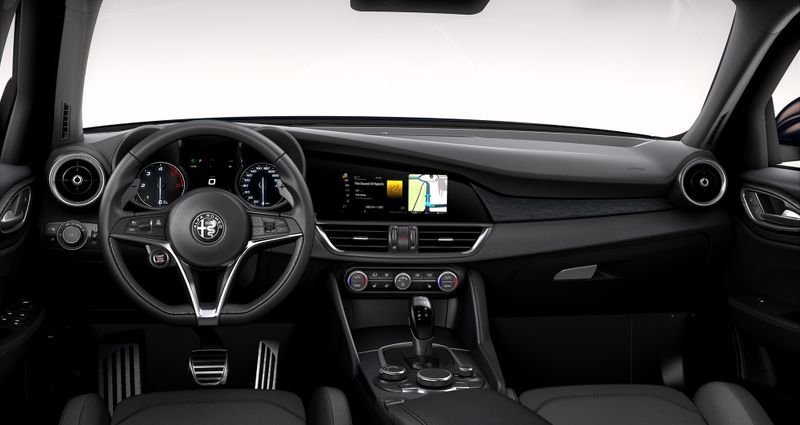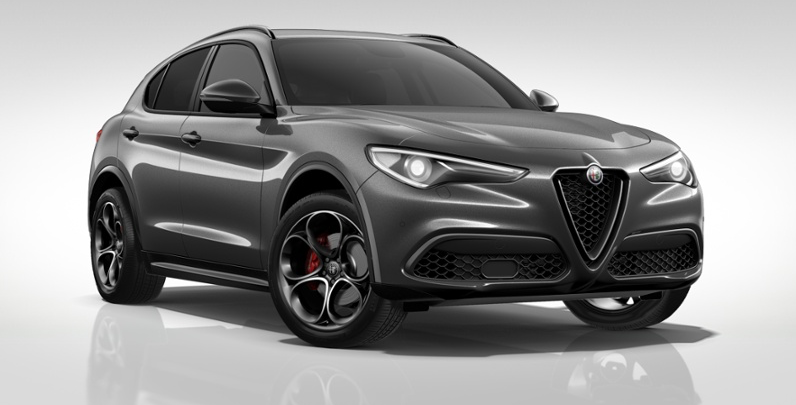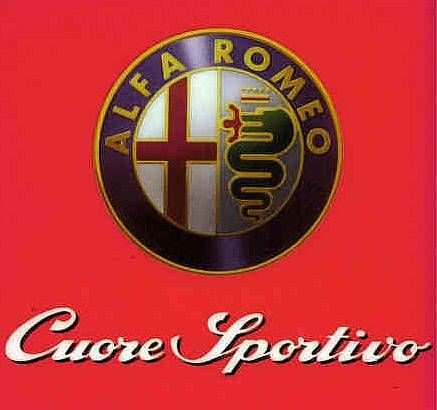Listen To The Heart
I am now the proud owner of my third1 Alfa Romeo! Well, technically I’ve only made the down payment: the car itself will arrive in a couple of months, so a good late Christmas / early birthday present for me.

Much as I would have loved a Giulia Quadrifoglio, Italy’s horsepower tax (spit) tips that over from "maybe if I scrimp & save" to "sorry, not going to happen". What I really would have liked would have been a Giulia Sportwagon, but Alfa Romeo in their wisdom don’t make one of those. I wonder if this is the American influence speaking, as they have made wagon versions of all their previous cars, going back to the 33 Giardinetta?
Regardless, this lack of a wagon option means that I had a difficult decision between heart (Giulia Veloce – most of the good bits of the Quadrifoglio, but with a thriftier two-litre twin-turbo four-pot, sending 280 bhp to all four wheels) and head (Stelvio Bi-Tech – basically a Giulia on stilts and with a bigger boot).
I had a good long test drive of a Giulia Super, which the dealer had ready to go. This is basically the spec I wanted for a Veloce, but in a lower state of engine tune – 200 bhp instead of 280. As with most modern cars, the Giulia features keyless-go, which I don’t have strong feelings about one way or the other. Alfa Romeo however have taken this excuse to put the start/stop button on the steering wheel, Ferrari-style, which is admittedly a gimmick, but a good one.

Straight away the impressions were good, with light and sensitive steering, reacting instantly to inputs and giving good feedback through the wheel. The Alfa is not only far lighter than the Beast, it’s also the lightest of its peers, usefully edging the BMW 3-Series, the Mercedes-Benz C-Class, and the Audi A4. You can feel this lightness as soon as you turn the wheel, with a level of agility and responsiveness the others struggle to match. The transmission sends drive to all four wheels, but in normal use it’s heavily rear-biased, which also helps.
Even in lukewarm 200 bhp spec, this motor pulls well. Again, the lack of weight helps here, but it’s a willing engine, and it sounds good too. The eight-speed ZF gearbox is technically the same unit as in the Volvo V70 I also drove, but the feeling could not be more different. Left to do its own thing, it shuffles gears quite competently, and indeed invisibly, especially in normal driving. However, should you be in the mood, there are those paddles behind the steering wheel… Slap the BMW-style gearstick left into manual mode, and you are in full control, and I do mean full. The dealer sales rep was sitting beside me, so I couldn’t get too extreme, but I tried hard to catch the system out, and I simply couldn’t.
Alfa Romeo also offers its DNA drive-mode selector, and the three modes are indeed usefully different. You start in N, for Normal, which is a good description. In this mode everything is, well, normal; the car will trickle around town quite happily without making a fuss, but will also downshift promptly if you put your foot down. D is for Dynamic mode, and everything gets just a bit sharper-edged; the engine note hardens, the transmission hangs on to gears for a bit longer, the traction control relaxes a bit (it can’t be turned fully off except on the Quadrifoglio), traction shifts entirely to the rear wheels, and so on. The test car did not have the sport suspension fitted that I specced for my own car, but that is also affected. The third option in the DNA system is A, the All-Weather mode, with the traction control primed and ready to step in at any moment. This mode can also be used for motorway cruising, as a sort of "eco" mode, where it is quiet and unobtrusive.

In addition to the shape of the gear lever, there is something else in the cabin that is eerily reminiscent of BMW, and that is the in-car entertainment system. There is a click-wheel which is pretty much identical to an iDrive controller, driving a menu system which is also very similar to the BMW setup. Imitation is the sincerest form of flattery, and indeed BMW’s iDrive is by far the best input system I have used. I can’t get on with Mercedes-Benz’s COMAND system, and Audi’s MMI is just a mess. Tesla-style systems that hide all the controls in a touchscreen are actively dangerous. Instead, the click-wheel systems that Alfa Romeo and BMW use allow drivers to memorise common paths through the system – two clicks left, press, three clicks right, press – for repeated tasks, without taking their eyes off the wheel.
I don’t intend to spend much time with the Giulia’s onboard systems, though, since it has a very good CarPlay implementation. Upon connecting the phone, the whole screen – a very nice 8.8" TFT, merged beautifully into the curve of the dashboard – is taken over by the CarPlay display, which can be navigated using that wonderfully tactile click-wheel, with its direct haptic feedback. Plus of course there’s Siri, available through her own button on the steering wheel, who will read you messages and take dictation in return.
Everything you touch in the Giulia’s cabin feels premium. In classic Alfa style, the instruments are very much focused on the driver, but all the control surfaces are pleasant, the ICE is competent but not intrusive, and all the other controls fall easily to the hand. The steering wheel in particular is a joy, adjusting easily to suit even my difficult requirements: I have long legs and so I sit quite far back, but even though I also have long arms, I like the steering wheel relatively close to me, low down but not so much that it obstructs the instruments. The sports seats also provide great lateral support during cornering.
When it comes to practical aspects, the boot is larger than I expected, but still compromised (as compared to a wagon) by a big cross-member that sits below the rear screen. Rear leg room is also perfectly adequate, even behind me, but not perhaps ample. These considerations persuaded me to also test-drive the Stelvio SUV.

This is basically the same car, just with longer suspension travel and a larger boot (and apparently slightly more rear leg room). This time I did get to drive the 280 bhp engine, but while I could feel the extra power, its impact was somewhat blunted by the extra weight. The Stelvio is still a light car for what it is, but it’s inevitably taller than the Giulia, and you do feel that when cornering. There is apparently an active suspension pack which mitigates some of the body roll, but it’s throwing technology at a physics problem which can be avoided by simply not jacking a Giulia up on stilts in the first place. I also don’t particularly like the fact that you can see the much smaller real exhaust tips hiding in plain sight inside the massive chromed fake tips. Petty, I know, but there it is.
Ultimately what made my decision was that, after the Beast, I’ve had my fill of SUVs and want to get back low to the ground. I would have happily bought a Giulia Sportwagon, but since Alfa Romeo won’t sell me one, I think I can make the saloon work. The Stelvio is a fine SUV and I would have been happy with it, but the Giulia is just better at being a car.

I did make a bit of a gamble on the colour, opting for what is apparently the rarest colour in the gamut: Grigio Lipari. In the configurator it looks almost burgundy, but in person it’s a rich grey-blue, shifting between one and the other depending on the light, with reddish flecks embedded beneath the surface. I think it will look great, especially with the diamond-cut version of the classic Alfa "telephone dial" wheels, but we shall see when it arrives.
I’m just happy to have rejoined the ranks of the Alfisti.

-
I previously owned a 156 with the last generation of the venerable Busso V6 engine, as well as a 147 Blackline with every "sport" option in Alfa’s catalogue. I thoroughly enjoyed both, and neither ever gave me any trouble. So much for Alfas’ high-maintenance reputation! ↩